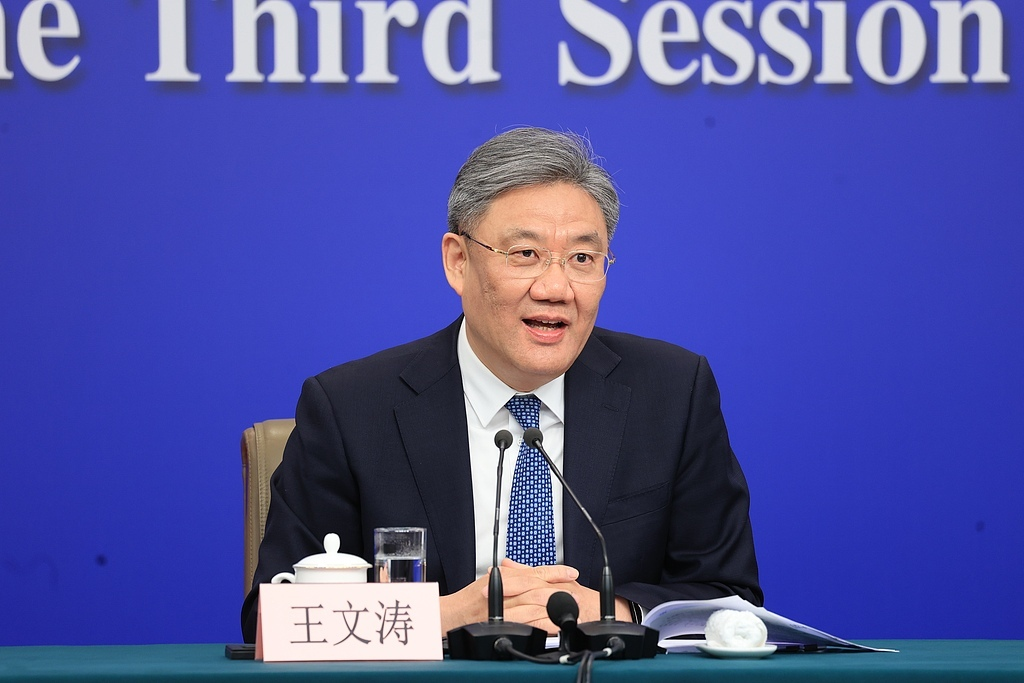MOFCOM: Individual Countries’ Tariff Measures Disrupt Trade Order; China to Stabilize Foreign Trade Through Three-Pronged Approach
Beijing, March 6, 2025 – At a press conference on economic affairs during the Third Session of the 14th National People’s Congress, Wang Wentao, Minister of Commerce, addressed the escalating challenges to China’s foreign trade amid heightened unilateralism and protectionism. “Certain countries are wielding tariff sticks, disrupting international trade order and threatening global supply chain stability,” he stated, emphasizing the severe pressures on China’s export sector.
Three Key Strategies to Stabilize Foreign Trade
Minister Wang outlined a comprehensive plan to safeguard trade growth through policy reinforcement, incremental expansion, and enterprise support:
1. Strengthening Policy Support
- Targeted Measures: MOFCOM will introduce a raft of policies to stabilize trade growth, with ministries and local governments swiftly implementing detailed rules and 配套措施 (supporting initiatives).
- Dynamic Policy Adjustments: “Given the volatile landscape, we must address immediate challenges while advancing high-quality trade development,” Wang said. New support policies will be researched and deployed promptly to help enterprises secure orders, combining short-term relief with long-term strategic goals.
2. Expanding Incremental Growth
- Cross-Border E-Commerce and Green Trade: New cross-border e-commerce comprehensive pilot zones will be established, with support for cross-border e-commerce platforms and overseas warehouses. Growth will also be driven in intermediate goods trade and green trade.
- Service Trade Innovation: Despite rapid growth, service trade accounts for only 14.6% of China’s total foreign trade (2024), dominated by traditional sectors like transportation and tourism. To bridge the gap with developed nations in knowledge-intensive services, MOFCOM will:
- Promote Openness: Fully implement the cross-border service trade negative list (national and FTZ versions), launch pilot zones for innovative service trade development, and build comprehensive reform platforms.
- Foster Integration: Enhance competitiveness in traditional services (e.g., inbound tourism, digital services, “bonded+” models) while promoting synergies between goods, service, and digital trade.
3. Assisting Enterprises
- Risk Mitigation: Expand the scope of export credit insurance and guide financial institutions to increase financing support for exporters.
- Platform Leverage: Major trade fairs like the CIIE, Canton Fair, CIFTIS, and Digital Trade Expo will continue as key platforms. Enterprises will be encouraged to participate in international exhibitions to expand channels and partnerships.
- FTA Expansion: Negotiate new free trade agreements to enhance cooperation in service and digital trade, advancing trade liberalization and facilitation.
Confidence in Global Trade Integration
“Challenges are surmountable,” Wang concluded. “The historical trend of economic globalization is irreversible. We are fully confident in stabilizing the foreign trade foundation and advancing China’s journey toward becoming a trade power.”
The ministry’s strategy underscores China’s commitment to navigating trade headwinds through policy agility, structural innovation, and global collaboration, reaffirming its role as a stabilizer in the international economic order.
 中文版
中文版
